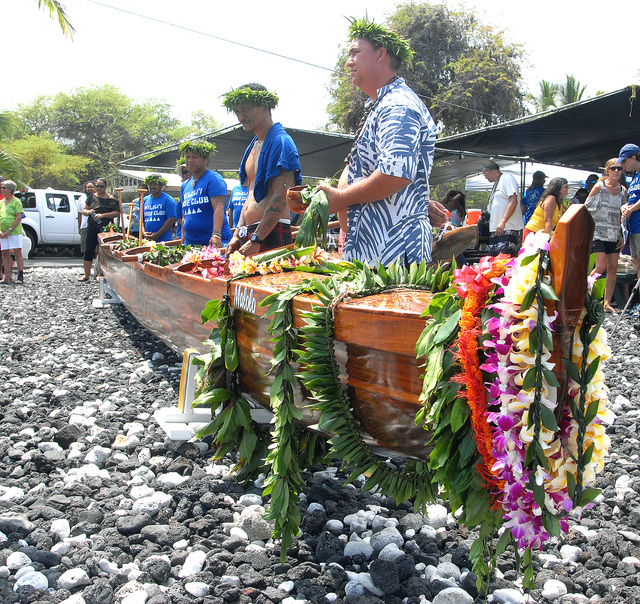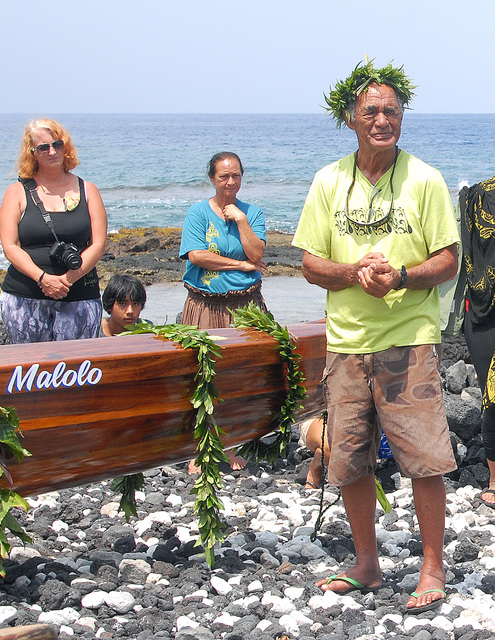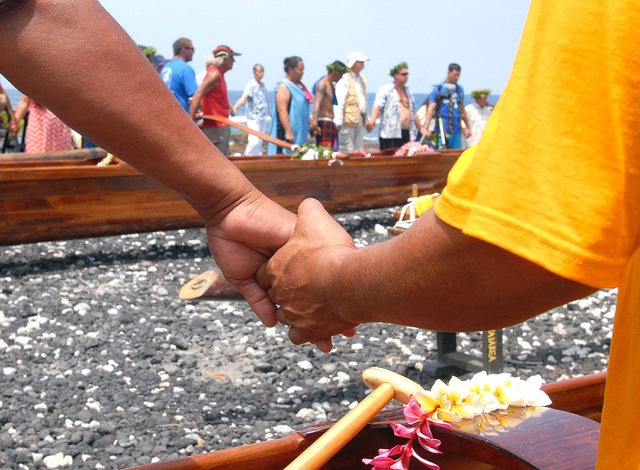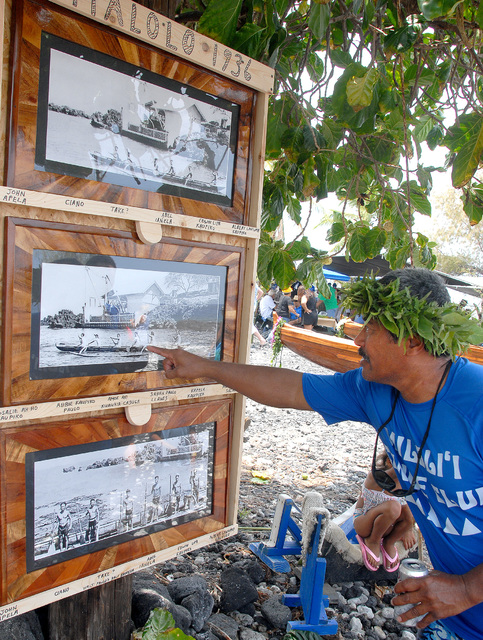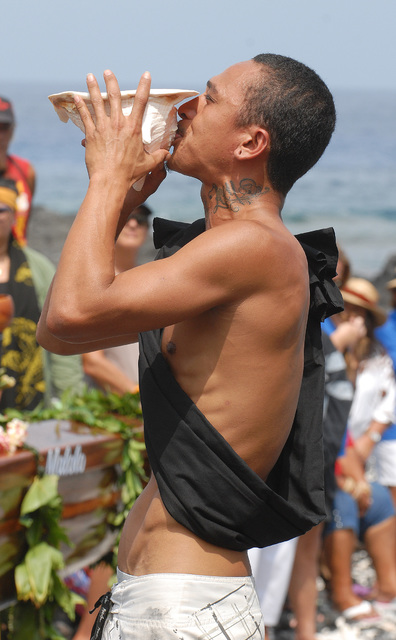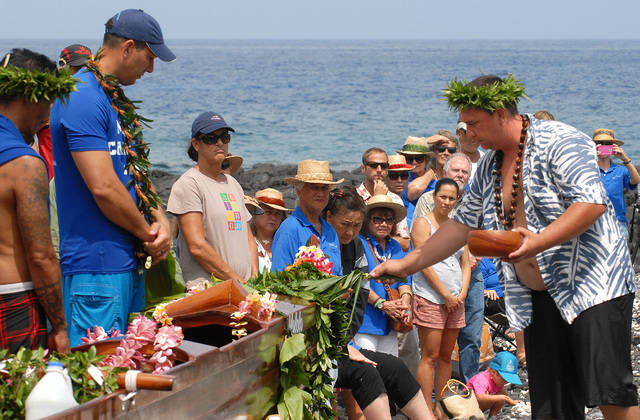A Tale of Two Canoes
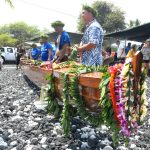

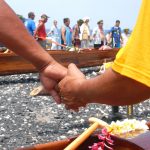
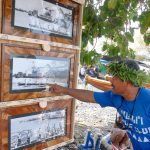

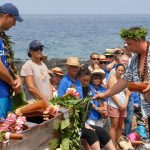
MILOLII — It had been a dream for a long time.
ADVERTISING
A koa wood canoe is the soul of any paddling club. In the fishing village of Milolii, where generations of people are tied to the sea and craft of their fathers, this is especially true.
And so when the sleek wooden hulls of the 45-foot racing waa Malolo and Naia landed on the shores where they were built in 1928, it was a celebration Saturday morning of history and the return of Milolii’s own.
Not long ago, both canoes were far away, and quietly returning to the earth.
Ira Kekaualua had dreamed of this day, had hatched plans with former state Sen. Gilbert Kahele to restore the mouldering, bug-eaten and broken craft, to upgrade them up to modern racing specifications and bring them into Milolii side by side. Although Kahele passed away in January and didn’t live to see this day, Kekaualua — who battles emphysema — summoned the strength that remained in his 80-year-old body, defied medical opinion, took his oxygen tank and ohana with him and crossed the island to welcome the Malolo and Naia home.
“Nobody can fool around; these boats are gonna fly,” said the founder of Hui Waa O Waiakea from a chair on the shoreline.
Some 300 people gathered on Milolii’s shore to watch the waa come in. One of them was Elroy Reyes, who claims the canoes’ master builder Kekumu Kawaauhau as his own great-grandfather. When he was a little boy, Reyes often heard stories about the canoes.
It was whispered down to him on his grandmother’s side that both waa came from a single large koa that had grown directly above the village.
“She is everything to me,” Reyes said of the Malolo. “She is the start of something new, but still old. She’s the start of a new generation, for our kids and our kid’s kids. Whatever she had in the past can be in the future. She was the jewel for this village.”
And what a jewel she was. Built at 33 feet — far shorter and lighter than modern 45-foot, 400-pound racing canoes — the Malolo was an all-purpose fishing and transport canoe, but also a craft that began distinguishing itself as a racer the same year it was built, said Kai Kahele, son of the late senator and director of Paa Pono Milolii, the local organization responsible for bringing the dream of the canoe’s restoration into reality.
“When it did race, it was incredible,” Kahele said.
The waa caught the eye of paddling legend John D. Kaupiko, who asked to take the Malolo to the regattas on Oahu. In 1954, she won and set a record in the Molokai Channel race, finishing in 6 hours and 5 minutes. The Malolo would race on Oahu for years and become one of the state’s most storied wooden canoes, but even she was made obsolete by the advent of lighter fiberglass hulls. Kekumu Kawaauhau’s jewel eventually was left to rot in peace.
Her heyday long done, the waa made her way to Hilo in 2005, where moisture worsened the rot. That could have been the end for the canoe. However, her sister the Naia was slumbering nearby, just as neglected.
“Seventy years after they parted ways, both canoes ended up together in Hilo, a quarter of a mile from each other,” Kahele said. “How powerful is that?”
Powerful enough to begin a dream for Kahele Senior and Kekaualua in 2012.
Rather than pay more than $100,000 and wait several years to buy a new koa waa, the community of Milolii decided it wanted to do whatever it took to make Kahele’s dream a reality. In the end, it would cost $75,000 to restore and race the Malolo.
Kai Kahele, who just recently filled the vacant Senate seat left by his father, began writing grants. From 2013 to 2015, the Hawaii Tourism Authority offered $45,000, enough to get the project started.
The Hawaii Canoe Racing Association came through with another $5,000, and an anonymous donation made up the remaining $25,000.
Not only did their rotten wood need to be replaced, the Malolo and the Naia both needed to be cut in half and lengthened 9 feet. They needed more freeboard — or hull above the waterline. To race again, they’d need a rebirth.
That’s where master canoe builder Bill Rosehill came in.
Rosehill worked in his Hookena shop for a solid year restoring both the Malolo for Milolii and the Naia for use by the paddlers of Hui Waa O Waiakea in Hilo. He cut the canoes to increase the rocker at both ends to meet state racing specifications, repaired gaping holes and replaced termite-eaten wood with new planks and new manu. School groups and apprentice woodworkers came by his shop to learn the traditional techniques.
“This is part of the past,” Rosehill said, standing draped in lei near the Malolo. “It served the community as a fishing village back in the 1920s and ’30s, and hopefully it will again, well into the future.”
The Milolii Canoe Club was revived just last year after an eight-decade hiatus. The club was quickly winning regattas, especially in the novice divisions. But the paddlers went through their first year with waa borrowed for racing.
With the Malolo, they will no longer have to earn their gold in the canoes of others.
“At the same time, she needs to be taken care of, so history doesn’t repeat itself,” Kahele said. “We have a saying that it takes a village to raise a child, and that’s what she is. She is home and she needs everyone to take care of her.”
Email Bret Yager at byager@westhawaiitoday.com.

